If you have DJ gear, you’ll want a desk or table to set it up on. Your living room table or computer desk won’t cut it for two reasons. One, it’s needed for other things so you can’t have your gear set up permanently on it, but secondly, it is too low, which is a big no-no.
You see, that kind of table is designed for sitting at – and try DJing stood up at such a table (and DJing is definitely something that’s done stood up), and you’ll soon have a backache.
And while you can put your DJ gear on the box it came on, on the table, when you are getting started, soon enough you’ll want a “proper” DJ table, at the right height. (Curious as to what that height is? Check out this article).
Watch the show
Prefer me to talk you through this? In this video, a recording of a live show from the Digital DJ Tips YouTube channel, I talk you through everything in this guide, and we take questions from our community too on the subject.
So you know you need a proper table, and you’re classy enough to know your ironing board won’t cut it – although in truth, a keyboard stand just might! But assuming you want something a bit more substantial than that, in the rest of this article, we’ll look at your choices.
DJ Tables & Desks: 5 Types To Choose From
1. The portable DJ table
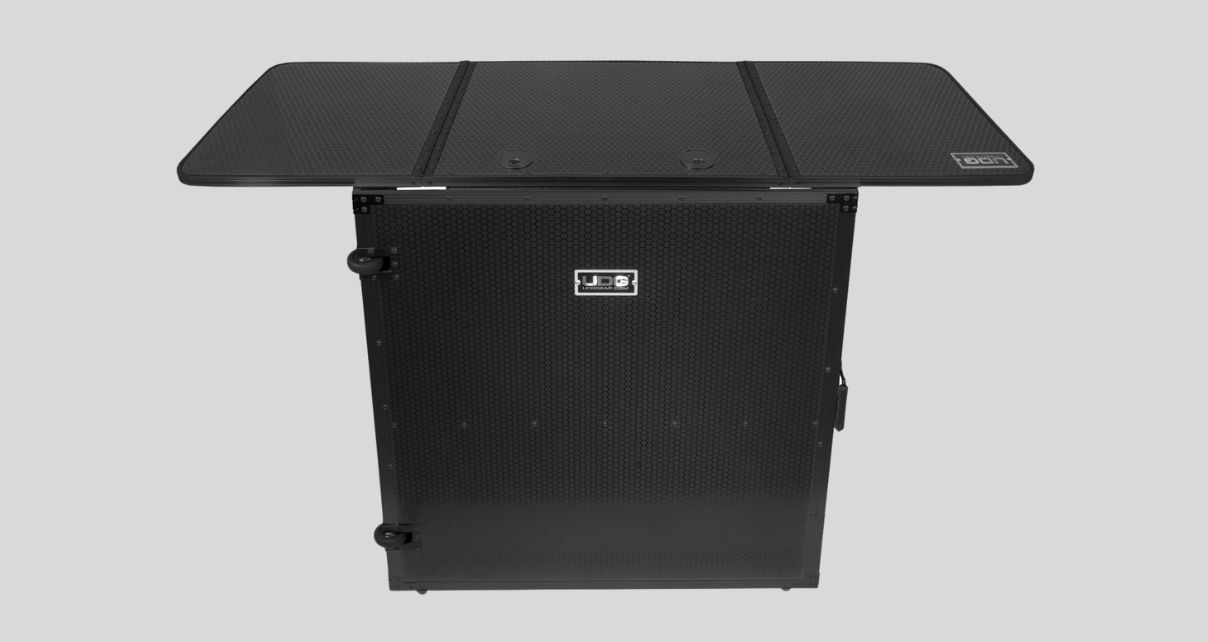
This type can go anywhere with you. They fold away so you can throw them in the back of your car, and once assembled, they give you a smart table with a facade at the front, storage area at the rear, everything at the right height, and usually extra features like cable tidy holes.
Pro: One table can work at home and at gigs
Con: May look a bit weird set up at home
Example: UDG Ultimate Fold-Out Table – here’s our review
2. The off-the-shelf furniture “hack”
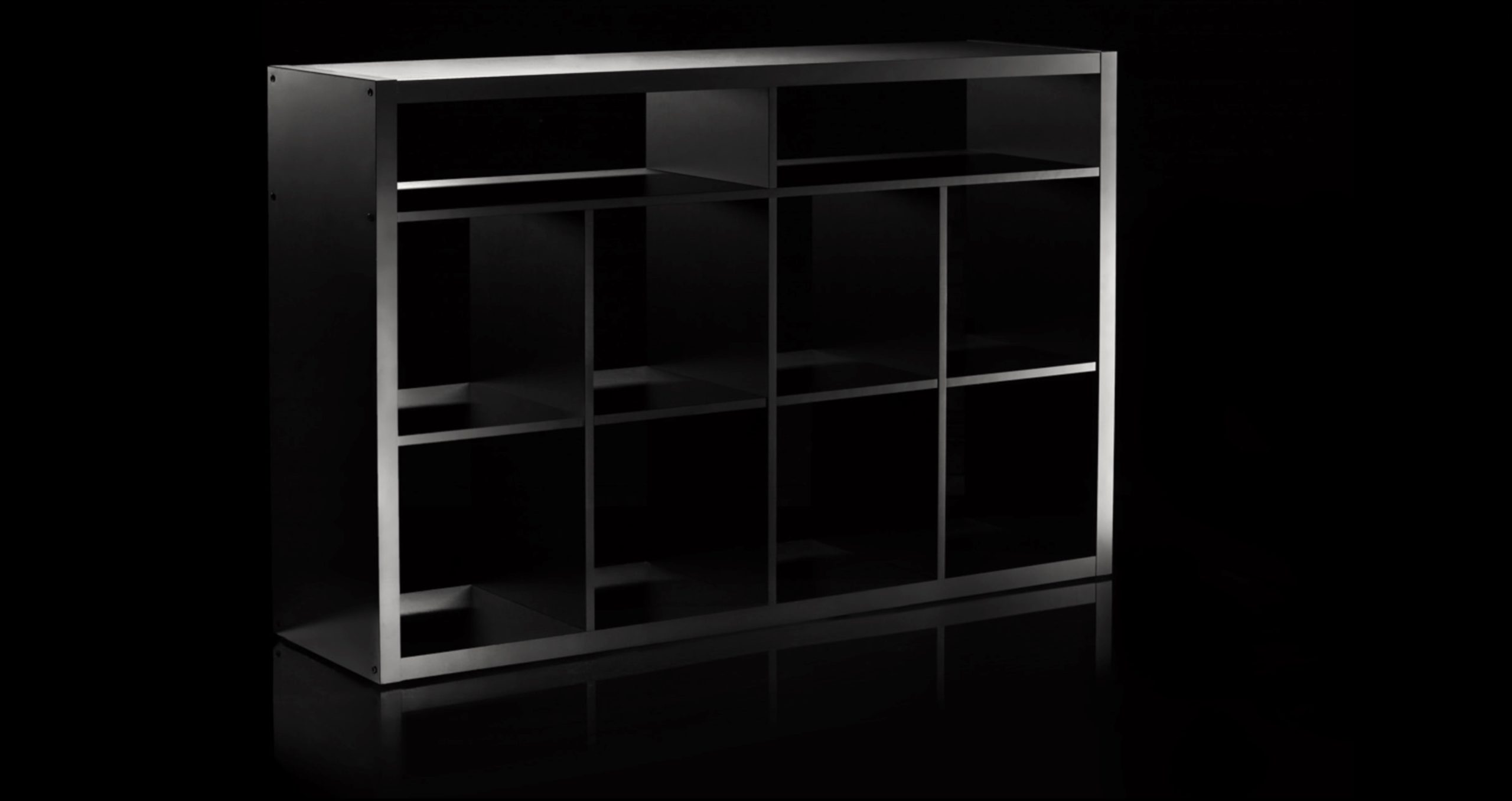
For many years, DJs have used IKEA furniture, especially certain designs that happily accommodated records etc – whole articles have been written on assembling DJ workstations from IKEA gear. If you can find furniture at the right kind of height (think kitchen work surface height), it can work really well.
Pro: Will look good in a domestic environment
Con: Hard to transport
Example: IKEA Obegränsad desk – more info here
3. The sit/stand table
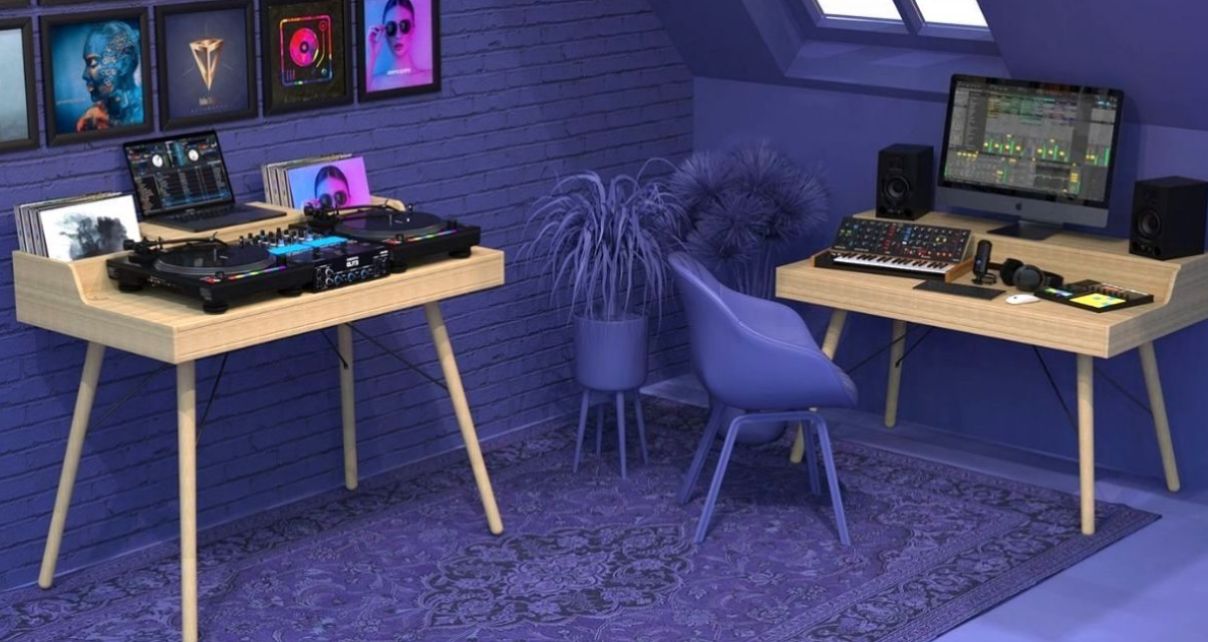
Standing desks were all the rage not so long ago, until everyone realised they actually wanted to sit down sometimes. Hence the sit/stand desks, that let you choose which position to have them set in. These can be great for DJ home studios, or where you need one desk for everything, work and play.
Pro: Can have them set to “sitting” for producing/planning mixes, and “standing” for DJing/performing
Con: Can get expensive
Example: Glorious Vintage Music Station – here’s our review
Read this next: 7 Extras & Accessories Every New DJ Needs
4. The lifestyle DJ table
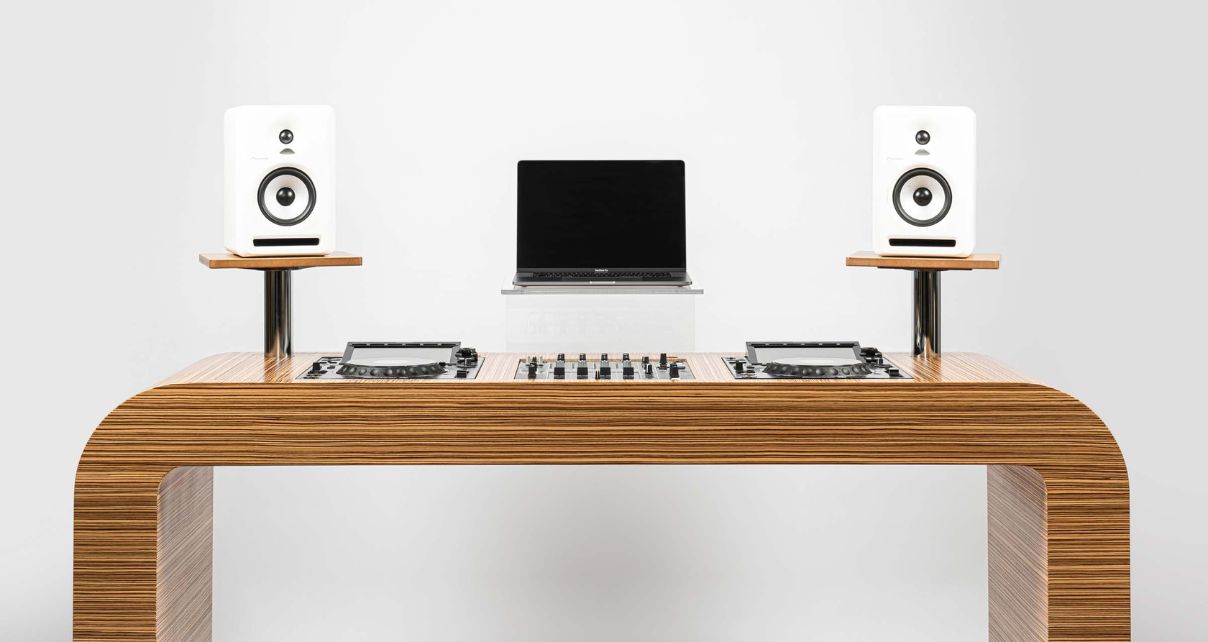
Many people with a lot of money to spend get into DJing as a hobby nowadays, and as ever, where people have cash to spend, companies pop up to fill the demand. If you’ve got the money to burn, there are some amazing “designer” deck tables out there.
Pro: Incredible designs to suit your taste
Con: Usually a huge price tag
Example: Hoerboard tables
5. The custom-built DJ table
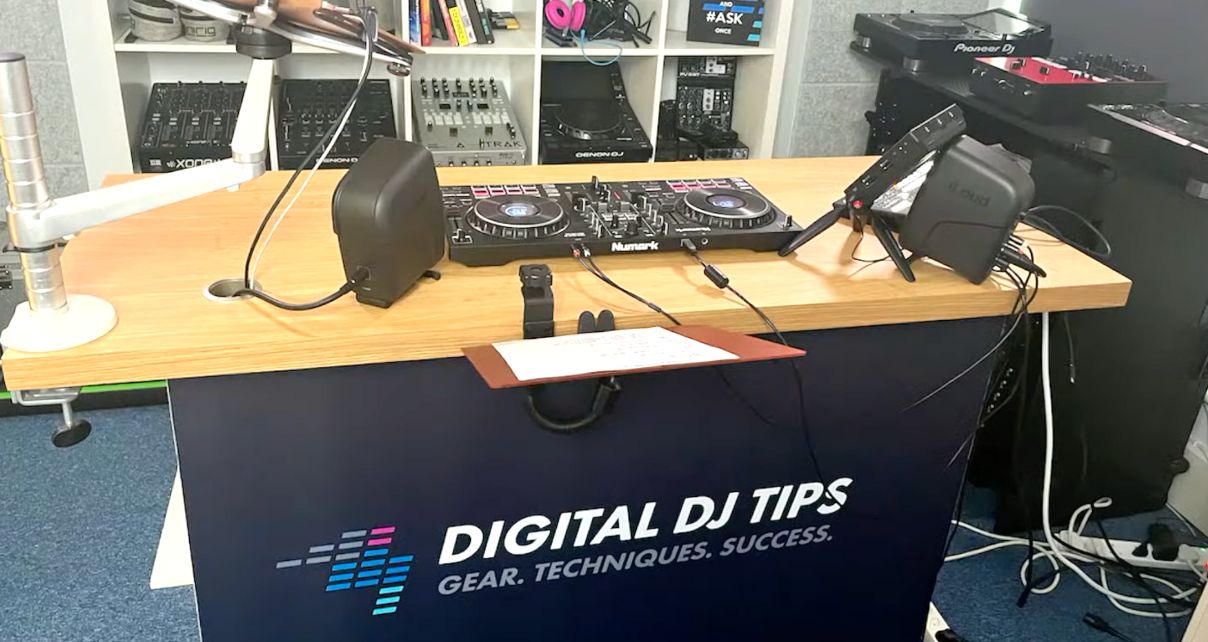
This is different from the “lifestyle” DJ table, because it needn’t cost much at all… or it could. Up to you. My first few DJ tables were wood with supports, screwed into the walls of rented apartments – £50 maximum to make. Nowadays at Digital DJ Tips, we have custom-branded wooden DJ desks, which still cost only around £900 – not cheap, but actually good value.
Pro: Have it exactly how you want it
Con: Got to find someone good to make it, then wait
Learn to DJ with Digital DJ Tips: The Complete DJ Course
Finally…
What we always advise our students is: Get the height right, and if at all possible, have your decks set up permanently. It makes it far more likely you’ll practise your DJing, and avoid backache when you do. The rest is up to you – hopefully this article and the links within it have given you some ideas.



